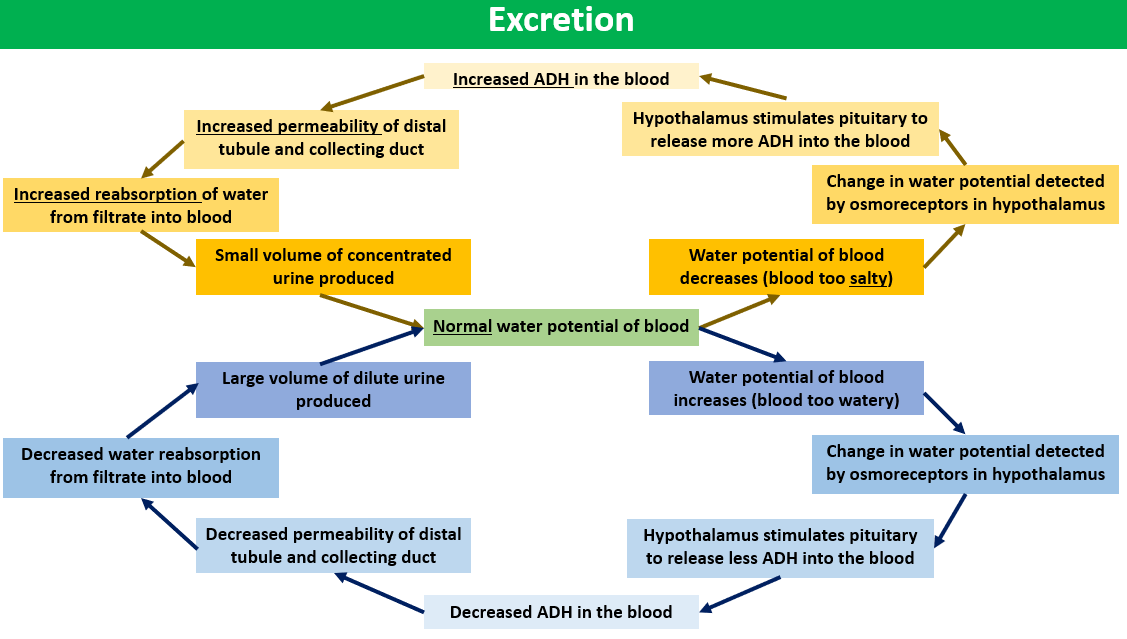2d. Structure and Function in Living Organisms: Transport Systems, Coordination and Response
1/25
There's no tags or description
Looks like no tags are added yet.
Name | Mastery | Learn | Test | Matching | Spaced |
|---|
No study sessions yet.
26 Terms
why do unicellular organisms not need transport systems, and why do multicellular ones need them?
unicellular organisms are small, so have large sa:v ratio, meaning the distance from the surface to the centre is small
diffusion, osmosis, and active transport through the cell membrane are sufficient for their needs
multicellular organisms are composed of many cells and cell layers
the distance from the surface to the centre is too long for diffusion alone
diffusion to all cells would be too slow to meet the organism’s needs
they therefore need transport systems
what does the xylem transport?
how is it structured?
water and mineral ions from the roots to other parts of the plant
hollow tube of dead cells
reinforced by lignin
no end walls between cells
one-way flow
always on the inside
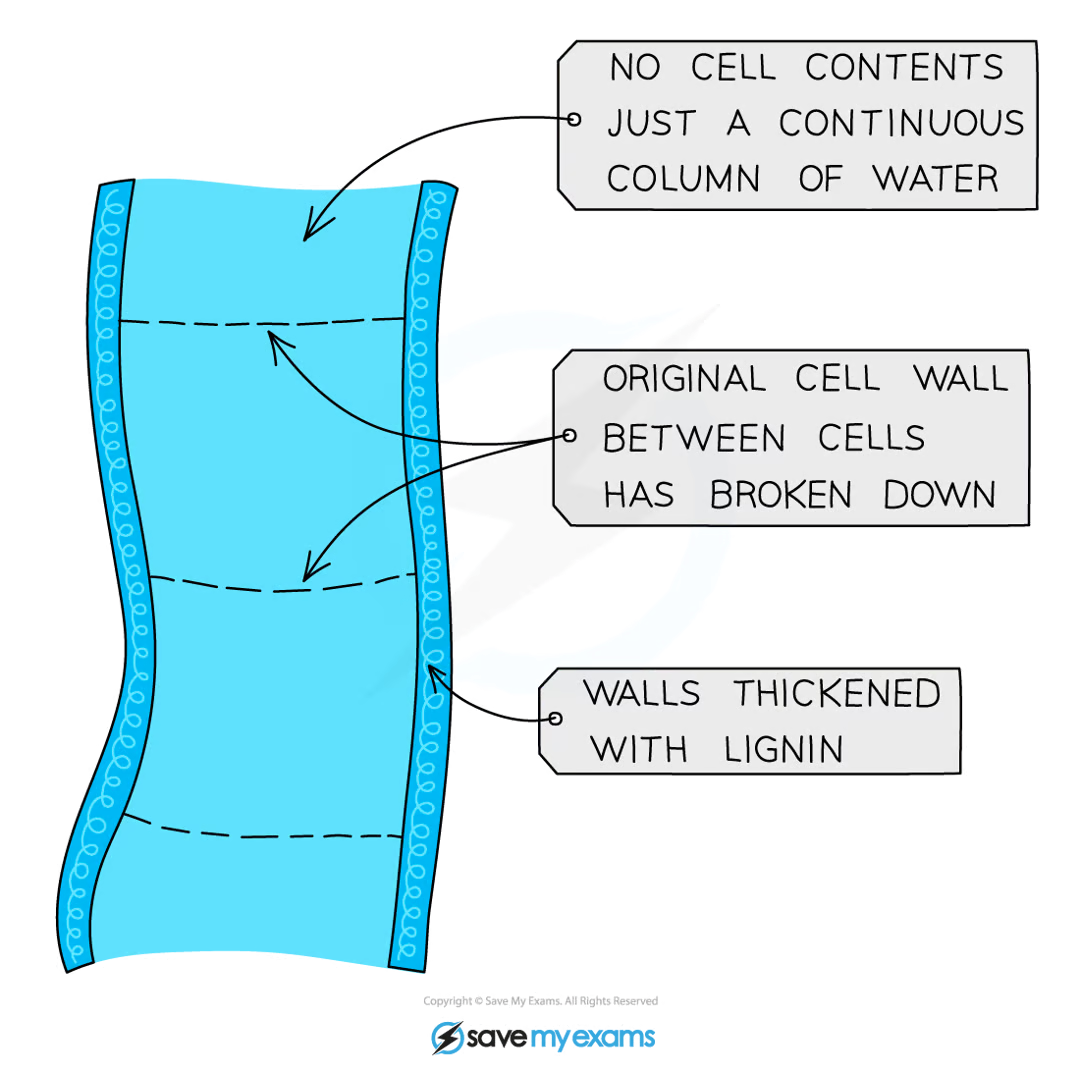
what does the phloem transport?
how is it structured?
sucrose and amino acids from where they are produced to where they are stored
tube of living cells
cells have end walls with small holes
two-way flow
always on the outside
phloem falls to the floor
what are root hair cells, what do they do, and how are they adapted for their job?
root hair cells are single-celled extensions of epidermis cells in the root
they grow between soil particles and absorb water and minerals from the soil
they are adpated for the efficient uptake of water (by osmosis) and mineral ions (by active transport)
they contain mitochondria which release energy for active transport
root hairs increase the surface area of plant roots, increasing the rate at which water and minerals can be taken up
water concentration of the cell cytoplasm is reduced to to the presence of mineral ions
what is the path of water through a plant?
root hair cell → root cortex cells → xylem → leaf mesophyll cells
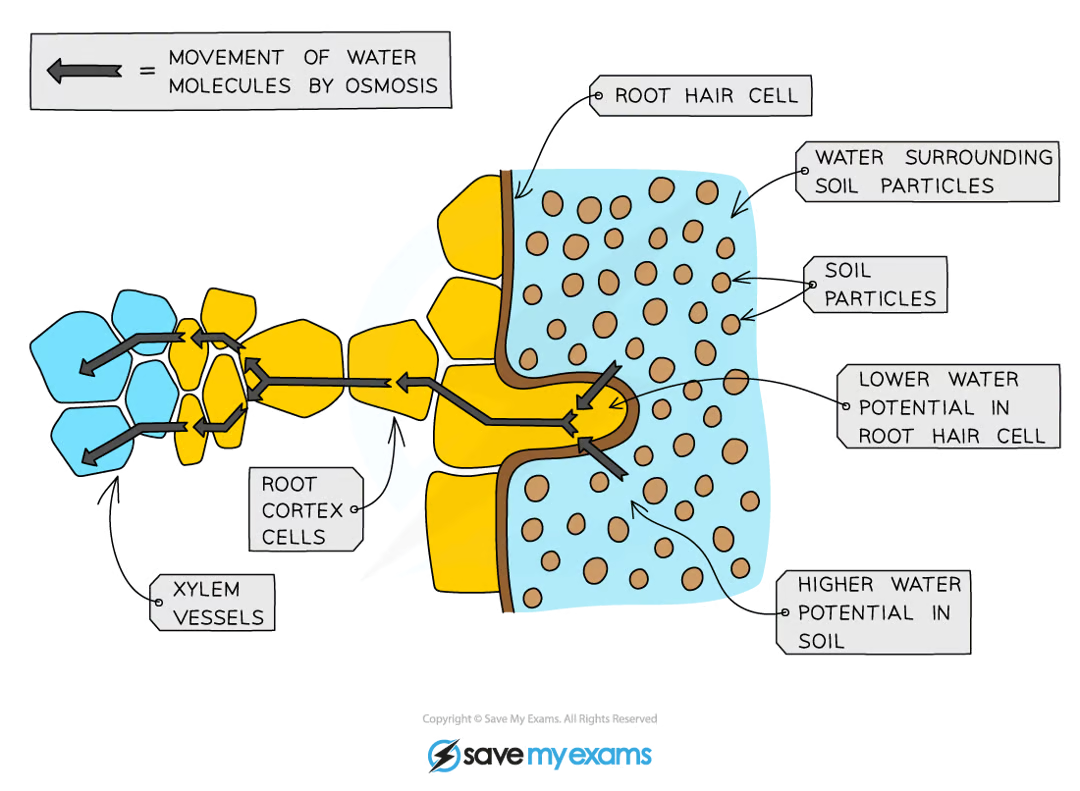
what is transpiration, and how does it occur? What are its functions?
The loss of water vapour from the parts of the plant that are above ground (leaves, stem, flowers)
via evaporation at surfaces of spongy mesophyll cells followed by diffusion of water vapour through stomata
transporting mineral ions
providing water to keep cells turgid
providing water to leaf cells for photosynthesis
cooling the plant as thermal energy is removed when water evaporates
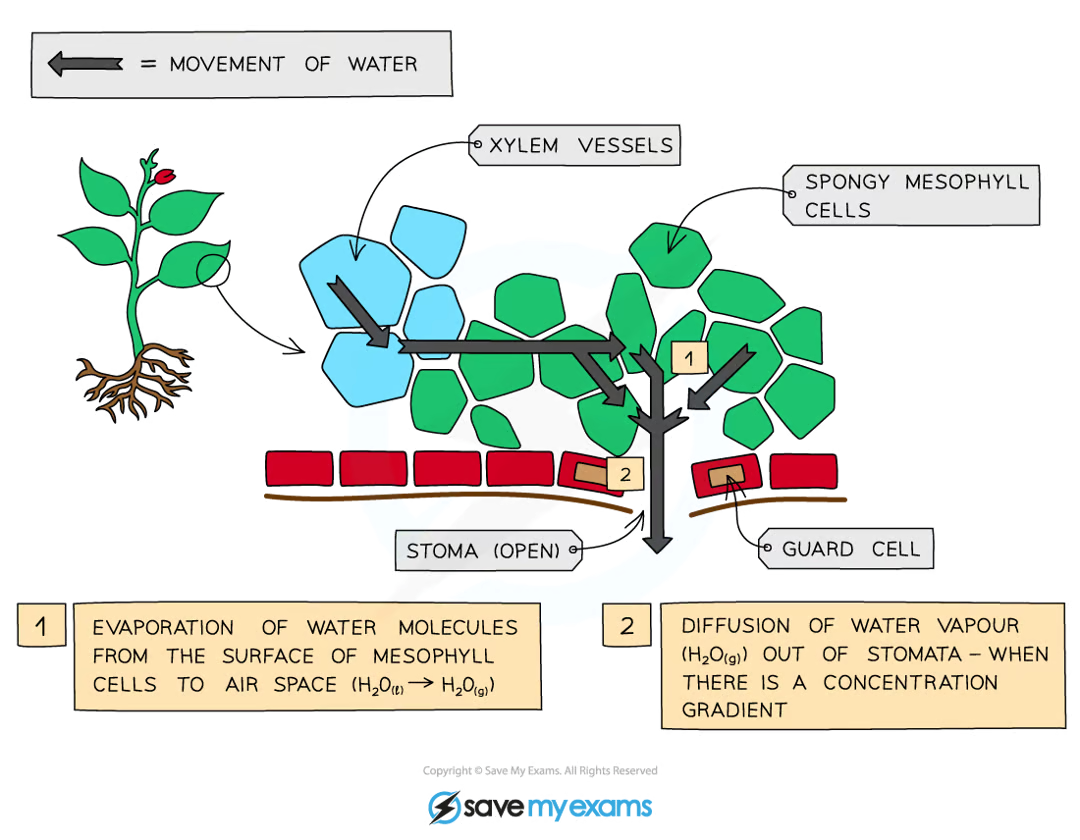
what factors affect transpiration, and how?
Factor | Relationship to transpiration rate | Explanation |
|---|---|---|
Air movement | As wind speed increases, the transpiration rate increases | When it is windy, water molecules that diffuse out of stomata are quickly blown away from the leaf; this creates a concentration gradient and more water vapour diffuses out of the leaf |
Temperature | As temperature increases, the transpiration rate increases | When temperatures are high water vapour molecules have more kinetic energy and move around faster, so they are more likely to move out of the stomata by diffusion |
Humidity | As humidity increases, the transpiration rate decreases | Humid air contains a high concentration of water vapour; this reduces the diffusion gradient between the inside of the leaf and the outside air, so less water vapour diffuses out of the leaf |
Light intensity | As light intensity increases, the transpiration rate increases | Increased light intensity increases the rate of photosynthesis, so the stomata open to allow gas exchange; when this happens, water vapour diffuses out of the stomata |
what is blood made up of?
red blood cells
white blood cells
platelets
plasma
over half of the volume is plasma
majority of the other half is red blood cells
remaining fraction is split into white blood cells and platelets
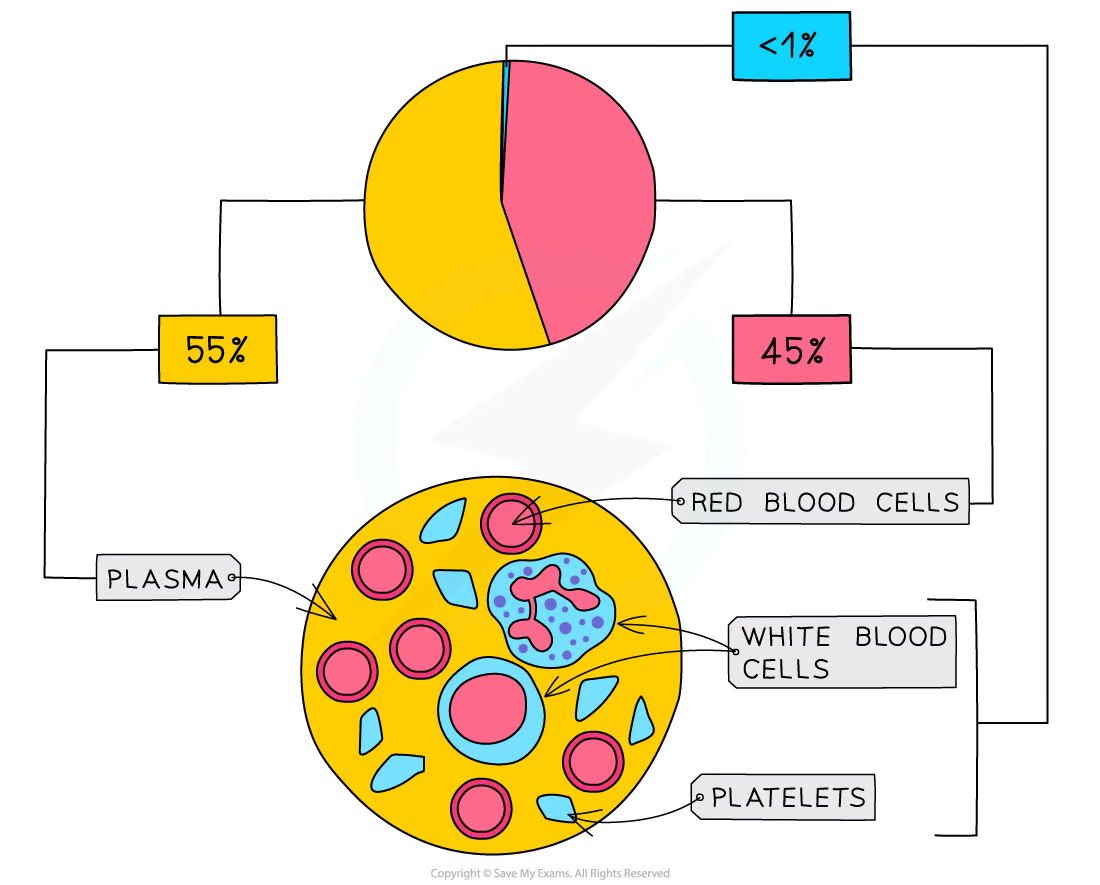
how are the components of blood structured?
Component | Structure |
|---|---|
Red blood cells | Biconcave discs containing no nucleus to maximise the available capacity to carry the protein haemoglobin |
White blood cells | Large cells containing a large nucleus; different types have slightly different structures and functions |
Platelets | Fragments of cells |
Plasma | Clear, straw-coloured aqueous solution |
what is plasma, and what is its function?
straw-coloured liquid which the other components of the blood are suspended within
important for the transport of many substances, including:
Carbon dioxide - waste product of respiration, dissolved in plasma and transported from respiring cells to the lungs
Digested food and mineral ions - dissolved particles absorbed from the small intestine and delivered to requiring cells around the body
Urea - waste substance dissolved in the plasma and transported to the kidneys
Hormones - chemical messengers released into the blood from the endocrine organs (glands) and delivered to target tissues/organs of the body
thermal energy - (created in respiration) is transferred to cooler parts of the body or to the skin where heat can be lost
what are red blood cells, and what are their function?
specialised cells which carry oxygen to respiring cells
adapted for function in 3 key ways:
packed with haemoglobin (protein which carries oxygen) to maximise amount of oxygen it can carry
no nucleus, allowing for more space for haemoglobin to be packed
biconcave disc shape, giving a large surface area to volume ratio to maximise diffusion of oxygen in and out
what are white blood cells, and what are their function?
part of the body’s immune system
specialised cells that defend against pathogenic microorganisms
two main types:
phagocytes
lymphocytes
how do phagocytes work?
carry out phagocytosis by ingesting pathogens
have a sensitive cell surface membrane that can detect chemicals produced by pathogenic cells
on encountering a pathogenic cell, they engulf it and release digestive enzymes to digest it
non-specific
how do lymphocytes work?
produce antibodies
proteins with a specific (complementary) shape to the antigens on the surface of the pathogen
provide a specific immune response as the antibodies produced will only fit one type of antigen on a pathogen
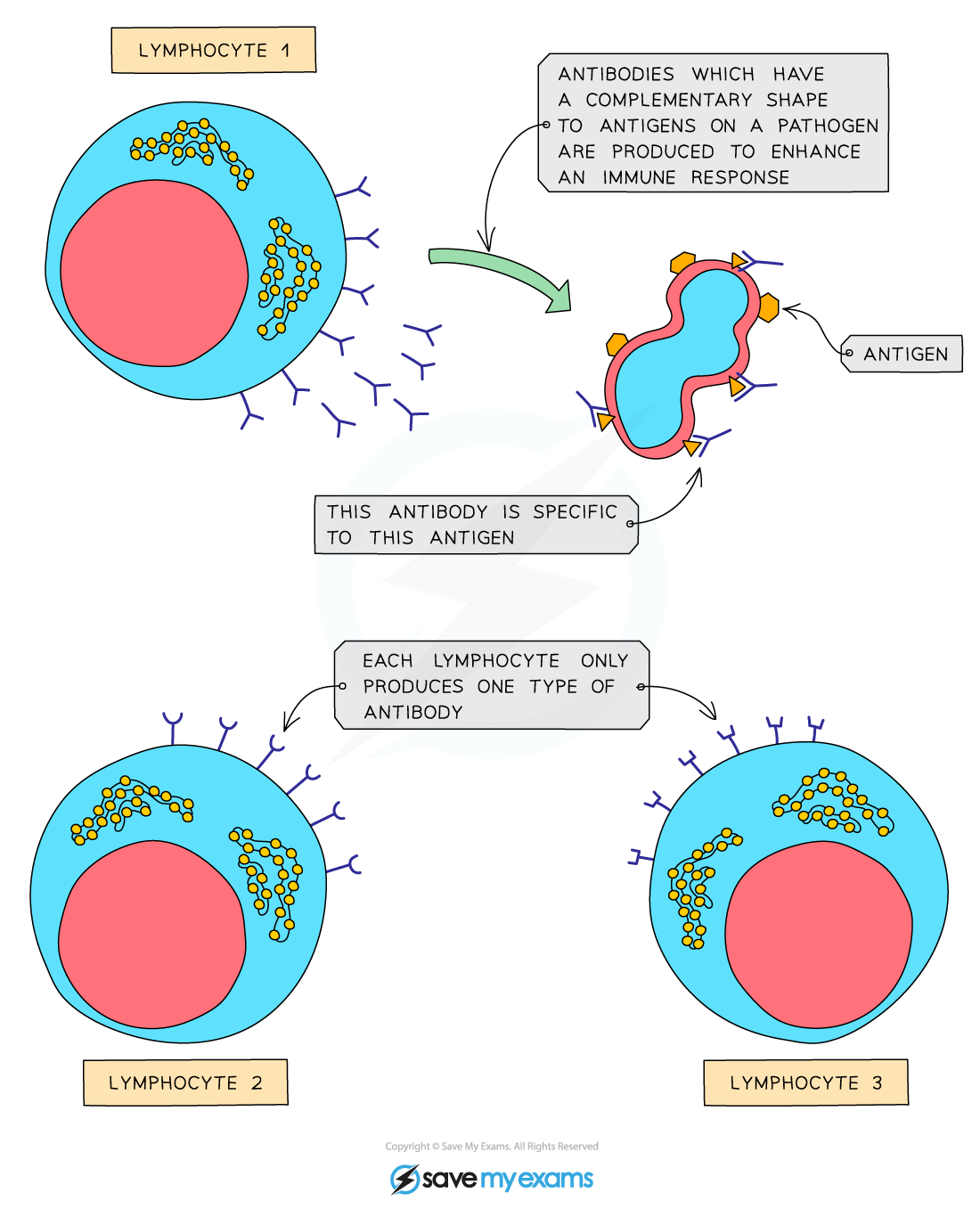
when is an organism considered to have immunity?
when they have sufficient levels of antibodies
what is the bodies response to infection?
pathogen enters blood stream and multiplies
release of toxins and infection of body cells causes symptoms in the patient
how is a response coordinated?
stimulus → receptor → energy transfer → sensory neuron → CNS → relay neuron → motor neuron → effector → response
receptors detect a change in x (the stimulus). the receptors convert the stimulus energy into electrical energy. the signal is passed along a sensory neuron to a relay neuron in the central nervous system. the CNS sends signals via motor neurons to muscles/glands (effectors), causing them to x (the response)
what is homeostasis?
the control or regulation of the internal conditions of a cell or organism
it is important for an organism to keep these internal conditions within set limits
what things does homeostasis control?
core body temperature
metabolic waste
blood pH
concentration of glucose in blood
water potential of the blood
the concentration of respiratory gases (co2 and o2) in blood
how is body temperature regulated in humans?
it is a negative feedback response
thermoreceptors detect a change in the temperature of the environment (the stimulus)
they convert the thermal energy into electrical energy
the signal is passed along a sensory neuron from the receptors to a relay neuron in the central nervous system
the hypothalamus, sensing that you are too hot, sends signals via motor neurons to sweat glands (effectors) to make you sweat - this response then cools you down
if you are too cold, the hypothalamus sends signals to your muscles (effectors) to make you shiver and generate thermal energy - this reponse heats you up
how is water content in the blood regulated in humans?
it is a negative feedback response
